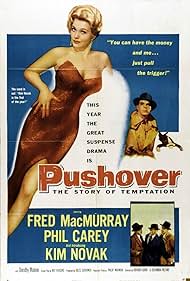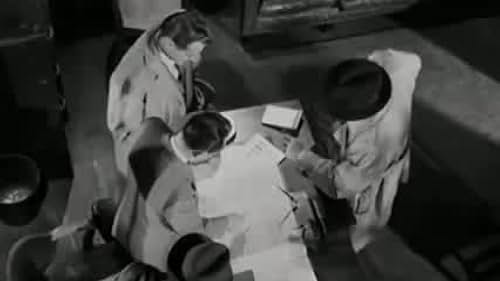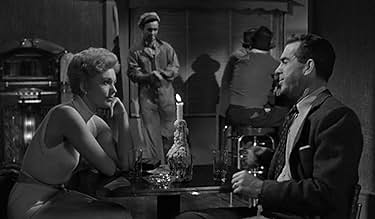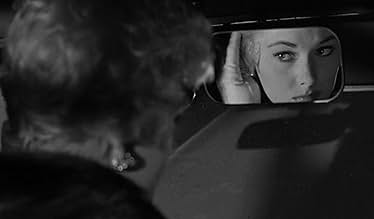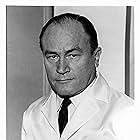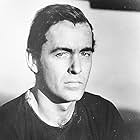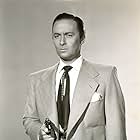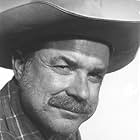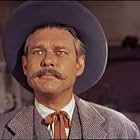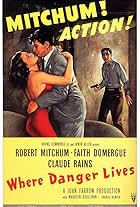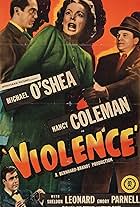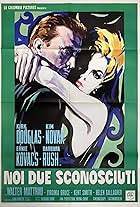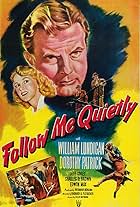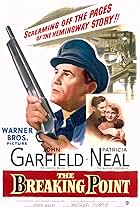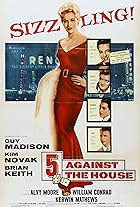VALUTAZIONE IMDb
7,1/10
4356
LA TUA VALUTAZIONE
Aggiungi una trama nella tua linguaAn undercover police officer falls for the beautiful moll of a bank robber on the run and together they plan to double-cross both the hood and the cops.An undercover police officer falls for the beautiful moll of a bank robber on the run and together they plan to double-cross both the hood and the cops.An undercover police officer falls for the beautiful moll of a bank robber on the run and together they plan to double-cross both the hood and the cops.
Philip Carey
- Rick McAllister
- (as Phil Carey)
James Anderson
- Beery
- (non citato nei titoli originali)
Joe Bailey
- Hobbs
- (non citato nei titoli originali)
Tony Barrett
- Pickup Artist in Bar
- (non citato nei titoli originali)
Walter Beaver
- Detective Schaeffer
- (non citato nei titoli originali)
Richard Bryan
- Detective Harris
- (non citato nei titoli originali)
Robert Carson
- First Bartender
- (non citato nei titoli originali)
Phil Chambers
- Detective Briggs
- (non citato nei titoli originali)
Dick Crockett
- Mr. Crockett
- (non citato nei titoli originali)
John De Simone
- Assistant Bank Manager
- (non citato nei titoli originali)
Alan Dexter
- Detective Fine
- (non citato nei titoli originali)
Don C. Harvey
- Detective Peters
- (non citato nei titoli originali)
Anne Loos
- Bank Teller
- (non citato nei titoli originali)
Trama
Lo sapevi?
- QuizOne of the sources for the film was the novel "The Night Watch" by Thomas Walsh, which was serialized under the title "The Killer Wore a Badge", in the Saturday Evening Post from November 10 to December 15, 1951. The other is the novel "Rafferty" by Bill S. Ballinger.
- BlooperAs in La fiamma del peccato (1944), although Fred MacMurray's character is not married, he wears a wedding ring throughout the film.
- Citazioni
Lona McLane: Well, it's been weird knowing you.
- ConnessioniFeatured in Hollywood and the Stars: In Search of Kim Novak (1964)
- Colonne sonoreThere Goes That Song Again
(uncredited)
Music by Jule Styne
[Played by duo pianists at the cocktail lounge]
Recensione in evidenza
Pushover is directed by Richard Quine and adapted to screenplay by Roy Huggins from stories written by Bill S. Ballinger and Thomas Walsh. It stars Fred MacMurray, Phillip Carey, Kim Novak, Dorothy Malone and E. G. Marshall. Music is scored by Arthur Morton and cinematography by Lester White.
Straight cop Paul Sheridan (MacMurray) is on the trail of the loot stolen in a bank robbery where a guard was shot and killed. He is tasked with getting to know Lona McLane (Novak), the girlfriend of the chief suspect in the robbery. But once contact is made, and surveillance set up over the road from her apartment complex, Sheridan begins to fall in love and lust with the sultry femme.
Comparisons with the superior Double Indemnity are fair enough, but really there is enough here, and considerable differences too, for the film to rightfully be judged on its own merits. Also of note to point out is that one or two critics have questioned if Pushover is actually a film noir piece? Bizarre! Given that character motives, destinies and thematics of plot are quintessential film noir.
A good but weary guy is emotionally vulnerable and finds his life spun into a vortex of lust, greed and murder. Yet the femme fatale responsible, is not a rank and file manipulator, she too has big issues to deal with, a trophy girlfriend to a crook, she coarsely resents this fact. The cop who never smiles and the girl who has forgotten how too, is there hope there? Do they need the money that has weaved them together? What does that old devil called fate have in store for them? Classic noir traits do pulse from the plot. True, the trajectory the pic takes had been a well trodden formula in noir by the mid fifties, where noir as a strong force was on the wane, but this holds up very well.
It isn't just a piece solely relying on two characters either, there's the concurrent tale of Sheridan's voyeuristic partner Rik McAllister (Carey), who has caught the eye of Lona's next door neighbour, Ann Stewart (Malone). Both these characters operate in a different world to the other two, yet the question remains if a relationship can be born out from such shady beginnings? The presentation of relationships here is delightfully perverse. The visual style wrung out by Quine (Drive a Crooked Road) and White (5 Against the House) is most assuredly noir, with 99% of the film set at night, with prominent shadows, damp streets lit by bulbous lamps and roof top scenes decorated sparsely by jutting aerials. The L.A. backdrop a moody observer to the unwrapping of damaged human goods.
Cast are very good, all working well for their reliable director. Novak sizzles in what was her first credited starring role, she perfectly embodies a gal that someone like Paul Sheridan could lose his soul for. MacMurray is suitably weary, his lived in face telling of a life lacking in genuine moments of pleasure. Carey, square jawed, tall and handsome, he is the perfect foil to MacMurray's woe. Malone offers the potential ray of light trying to break out in this dark part of America, while Marshall as tough Lieutenant Eckstrom and Allen Nourse as a copper riding the noir train to sadness, score favourably too.
It opens with a daylight bank robbery and closes in true noir style on a cold and wet night time street. Pushover, deserving to be viewed as one of the more interesting 1950s film noirs. 8/10
Straight cop Paul Sheridan (MacMurray) is on the trail of the loot stolen in a bank robbery where a guard was shot and killed. He is tasked with getting to know Lona McLane (Novak), the girlfriend of the chief suspect in the robbery. But once contact is made, and surveillance set up over the road from her apartment complex, Sheridan begins to fall in love and lust with the sultry femme.
Comparisons with the superior Double Indemnity are fair enough, but really there is enough here, and considerable differences too, for the film to rightfully be judged on its own merits. Also of note to point out is that one or two critics have questioned if Pushover is actually a film noir piece? Bizarre! Given that character motives, destinies and thematics of plot are quintessential film noir.
A good but weary guy is emotionally vulnerable and finds his life spun into a vortex of lust, greed and murder. Yet the femme fatale responsible, is not a rank and file manipulator, she too has big issues to deal with, a trophy girlfriend to a crook, she coarsely resents this fact. The cop who never smiles and the girl who has forgotten how too, is there hope there? Do they need the money that has weaved them together? What does that old devil called fate have in store for them? Classic noir traits do pulse from the plot. True, the trajectory the pic takes had been a well trodden formula in noir by the mid fifties, where noir as a strong force was on the wane, but this holds up very well.
It isn't just a piece solely relying on two characters either, there's the concurrent tale of Sheridan's voyeuristic partner Rik McAllister (Carey), who has caught the eye of Lona's next door neighbour, Ann Stewart (Malone). Both these characters operate in a different world to the other two, yet the question remains if a relationship can be born out from such shady beginnings? The presentation of relationships here is delightfully perverse. The visual style wrung out by Quine (Drive a Crooked Road) and White (5 Against the House) is most assuredly noir, with 99% of the film set at night, with prominent shadows, damp streets lit by bulbous lamps and roof top scenes decorated sparsely by jutting aerials. The L.A. backdrop a moody observer to the unwrapping of damaged human goods.
Cast are very good, all working well for their reliable director. Novak sizzles in what was her first credited starring role, she perfectly embodies a gal that someone like Paul Sheridan could lose his soul for. MacMurray is suitably weary, his lived in face telling of a life lacking in genuine moments of pleasure. Carey, square jawed, tall and handsome, he is the perfect foil to MacMurray's woe. Malone offers the potential ray of light trying to break out in this dark part of America, while Marshall as tough Lieutenant Eckstrom and Allen Nourse as a copper riding the noir train to sadness, score favourably too.
It opens with a daylight bank robbery and closes in true noir style on a cold and wet night time street. Pushover, deserving to be viewed as one of the more interesting 1950s film noirs. 8/10
- hitchcockthelegend
- 30 giu 2012
- Permalink
I più visti
Accedi per valutare e creare un elenco di titoli salvati per ottenere consigli personalizzati
- How long is Pushover?Powered by Alexa
Dettagli
Botteghino
- Budget
- 400.000 USD (previsto)
- Tempo di esecuzione1 ora 28 minuti
- Colore
- Proporzioni
- 1.85 : 1
Contribuisci a questa pagina
Suggerisci una modifica o aggiungi i contenuti mancanti

Divario superiore
By what name was Criminale di turno (1954) officially released in India in English?
Rispondi